
Roots
The coil and curl of textured hair, a living testament to ancestral journeys and resilience, holds within its very structure echoes of practices born millennia ago. For those of us connected to this heritage, the strands upon our heads are not merely biological filaments; they are an archive, a continuation of care, wisdom, and profound connection to the earth. To understand the role of plant butters in this rich heritage, we must travel back, tracing the origins of sustenance and adornment from the very soil that birthed these remarkable botanicals.
What ancient hands first pressed the rich goodness from a shea nut, or teased the creamy essence from a cocoa pod? The answers are woven into the collective memory of communities across continents, particularly in Africa and its diaspora, where plant butters became indispensable allies in maintaining not only the vibrancy of hair but also its symbolic power.
The earliest applications of fats and oils for hair were likely pragmatic, born of harsh environments that demanded protection and moisture. Sun, dust, and arid winds would have parched and damaged unprotected hair, necessitating external aid. Plant-derived butters, with their dense lipid profiles, offered a superior solution to lighter oils, providing a sealing barrier against environmental stressors. This knowledge, gained through generations of observation and experimentation, transformed simple acts of self-preservation into rituals of holistic care.
The story of plant butters in textured hair heritage begins with ancient hands recognizing botanical power for protection and adornment.
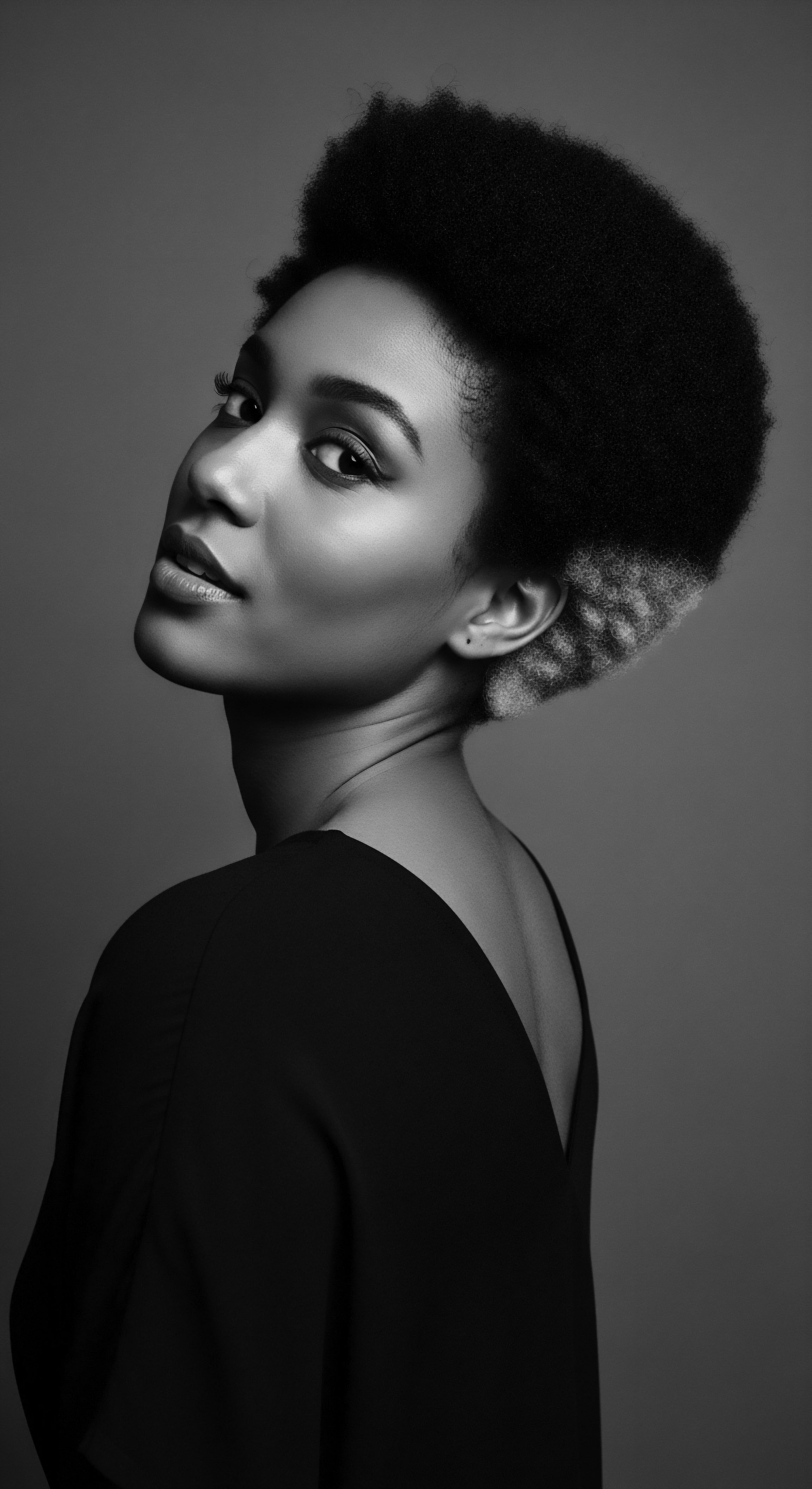
Hair’s Structural Uniqueness and Ancient Care
Textured hair, with its diverse curl patterns—from waves to tightly coiled formations—presents unique anatomical characteristics. Its elliptical cross-section, compared to the more circular shape of straight hair, means hair strands naturally spiral, creating points where the cuticle layers lift more readily. This architecture, while beautiful in its variation, also contributes to increased surface area, making textured hair more prone to moisture loss and breakage if not adequately cared for.
Ancient communities, without the aid of microscopes or molecular analysis, understood this intuitively. Their methods of care, often centered on dense plant butters, directly addressed these structural realities.
Consider the Cuticle Layers, the protective outer scales of each hair strand. When these layers are smooth and lying flat, they reflect light and help seal in moisture. In textured hair, these cuticles can be more raised at the bends of the curl, creating opportunities for moisture to escape.
Plant butters, with their rich fatty acid composition, were applied as emollients, serving to smooth down these cuticles, impart a lustrous sheen, and guard against the everyday wear that could lead to fragility. This wasn’t merely a cosmetic application; it was a structural reinforcement, a deep conditioning process honed over centuries.
The very concept of hair health, from an ancestral view, was intertwined with its appearance and resilience. A well-nourished, pliable head of hair signaled vitality and often, social standing. The application of plant butters, therefore, was a direct intervention to maintain the structural integrity of the hair, allowing it to withstand manipulation, braiding, and styling while retaining its strength and sheen.

Botanical Contributions to Hair Health
The rich chemistry of plant butters provided a treasure of benefits. Beyond simple moisturization, many of these butters contain vitamins, antioxidants, and anti-inflammatory compounds. For example, Shea Butter (Vitellaria paradoxa), a staple across West Africa, is known for its concentration of vitamins A, E, and F, alongside essential fatty acids.
These components offer protection against environmental harm and support scalp health, which is foundational for healthy hair. The wisdom of applying these natural gifts directly connected hair vitality to the well-being of the scalp, a holistic approach that modern science continues to affirm.
The careful selection of specific plant butters often corresponded to the availability of local flora and the particular needs of the hair and scalp within a given climate. Dry climates, for instance, necessitated butters with strong occlusive properties to prevent water loss, while others might have been valued for their perceived healing or soothing qualities for scalp discomfort.
| Plant Butter Shea Butter |
| Region of Historical Use West and East Africa |
| Traditional Hair Benefit(s) Moisture sealing, scalp soothing, protective barrier, sheen |
| Plant Butter Cocoa Butter |
| Region of Historical Use West Africa, Amazon (Mayan/Aztec civilizations) |
| Traditional Hair Benefit(s) Hair softening, frizz reduction, root nourishment, elasticity |
| Plant Butter Ucuuba Butter |
| Region of Historical Use Amazon Rainforest (Central/South America) |
| Traditional Hair Benefit(s) Scalp clarification, moisture, elasticity, damage repair |
| Plant Butter Mango Butter |
| Region of Historical Use Caribbean, India, other tropical regions |
| Traditional Hair Benefit(s) Softening curls, protection from elements, hydration |
| Plant Butter These plant butters were chosen for their practical efficacy and became central to hair care traditions across diverse communities. |
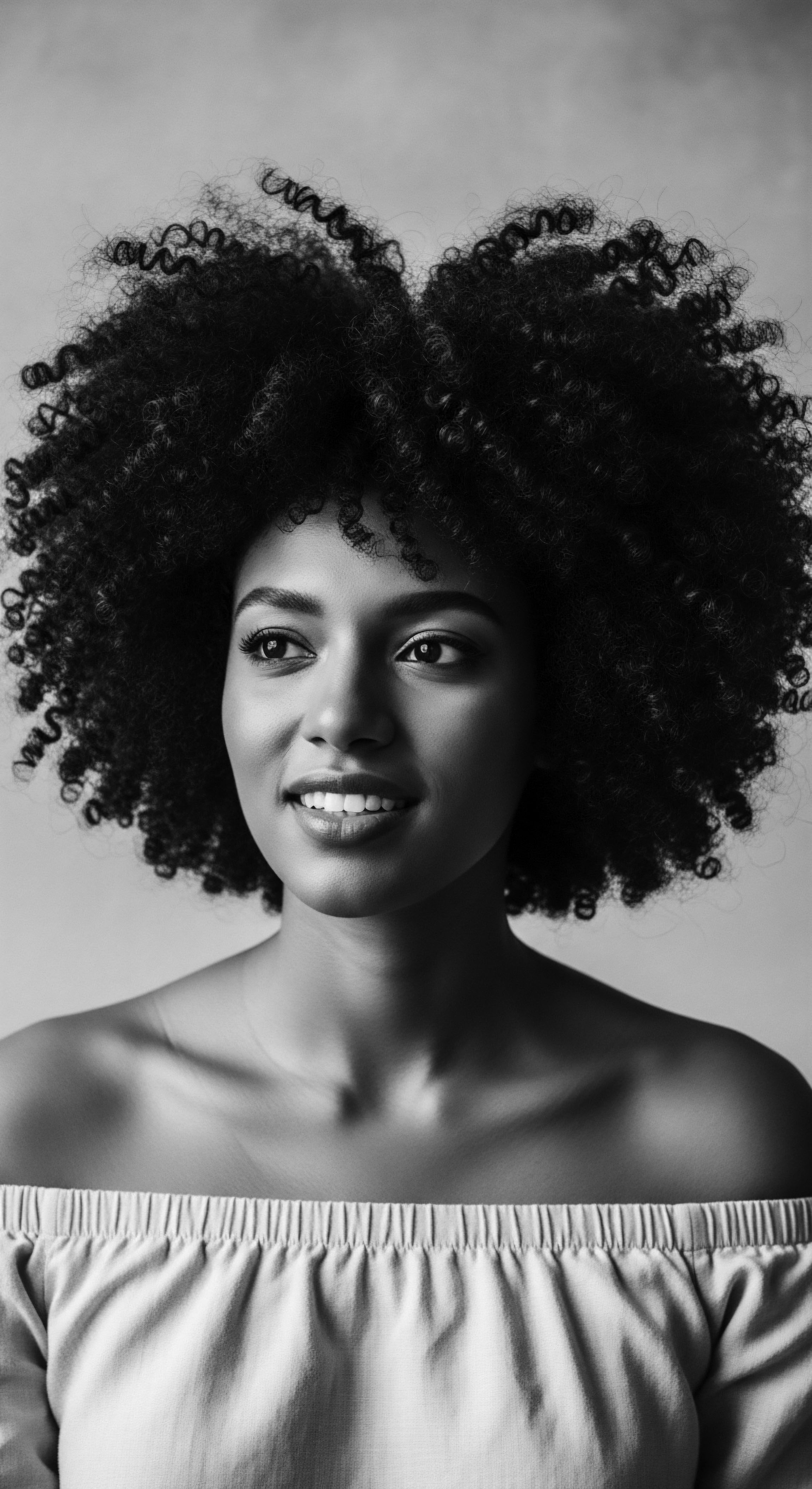
Ritual
Beyond the elemental act of application, the use of plant butters in textured hair heritage blossomed into rich, nuanced rituals—practices that were as much about community and cultural expression as they were about physiological hair health. These traditions were not rigid doctrines but living, breathing customs, passed down through the gentle cadence of touch, observation, and shared wisdom from one generation to the next. The very act of preparing and applying these butters became a moment of connection, a tender thread extending back through time, binding families and communities to their shared heritage and ancestral knowledge.
The physical acts of care, often performed by elders or mothers, transformed the hair into a canvas for identity. These moments, steeped in quiet focus, allowed for the systematic distribution of butters, ensuring every curl and coil received its portion of nourishment. The hands that applied these butters were not simply treating hair; they were speaking a language of care, of cultural pride, and of enduring beauty.
Ancient care rituals transformed plant butter application into acts of profound cultural expression and intergenerational connection.

Traditional Styling and Preservation
The application of plant butters became inextricably linked to the creation and preservation of traditional textured hair styles. Consider the elaborate Braids, Twists, and Coils seen across African societies, styles that served as markers of age, marital status, tribal affiliation, and even spiritual roles. These styles, often requiring hours of meticulous work, benefited immensely from the conditioning and holding properties of plant butters.
Butters provided the necessary slip for detangling, making the hair more manageable for intricate parting and braiding. They also sealed the hair, reducing friction and minimizing breakage during styling and wear, thereby extending the life of protective styles. A style treated with butter would remain neat, moisturized, and resilient for longer periods, a practical necessity in daily life and for ceremonial occasions. This deep understanding of how to work with textured hair, utilizing the natural properties of plant butters, allowed for the creation of functional art that celebrated the hair’s natural form.
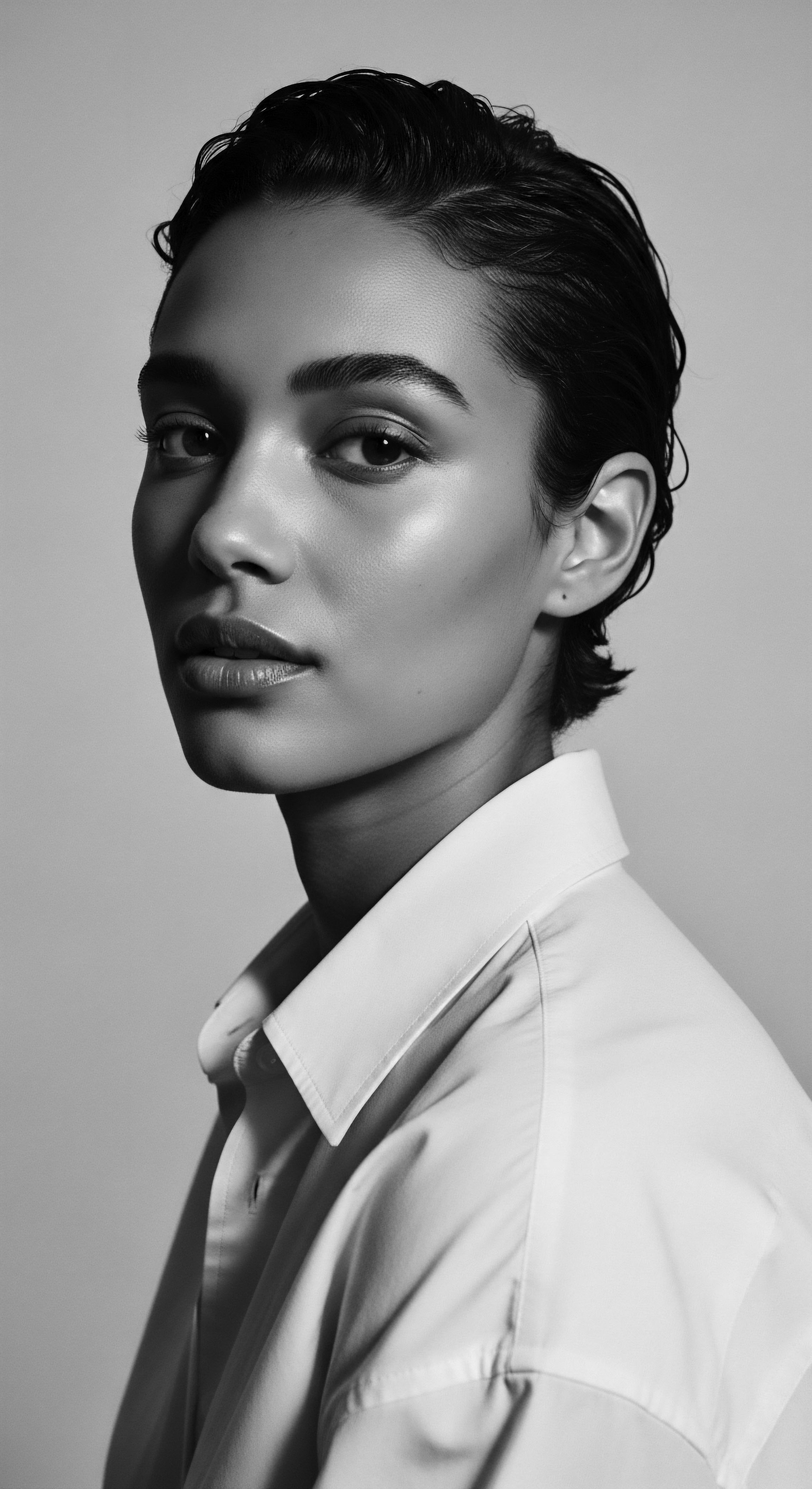
Community and Shared Wisdom
Hair care, particularly within many African and diasporic communities, was rarely a solitary pursuit. It was a communal activity, a time for storytelling, bonding, and the transmission of knowledge. Grandmothers, mothers, and aunties would gather, often under the shade of a tree or within the confines of a home, to care for one another’s hair. This communal grooming, deeply infused with the scents of plant butters, was where techniques were perfected, remedies shared, and generational wisdom exchanged.
Ayana Byrd and Lori L. Tharps, in their work, highlight how these practices strengthened bonds and preserved cultural identity. The butter, then, was not merely an ingredient but a participant in these shared moments, absorbing the laughter, stories, and love that filled the air.
Within these shared spaces, the understanding of different plant butters and their specific applications for various hair types or conditions was disseminated. Perhaps a butter was especially known for its ability to soften coarse textures, or another for its soothing effect on an irritated scalp. This collective knowledge, accumulated over generations, ensured that the practices remained relevant and effective for the diverse hair patterns within the community.
- Shea Butter ❉ Often applied before braiding to soften strands and improve manageability.
- Cocoa Butter ❉ Used for its ability to add shine and reduce frizz, particularly in tropical climates.
- Moringa Oil/Butter ❉ Traditional in Mali for scalp health and stimulating strong hair.
This communal aspect highlights how ancient hair care was not simply about individual beauty but about collective well-being, the preservation of cultural practices, and the deep, abiding respect for the body and its natural forms.
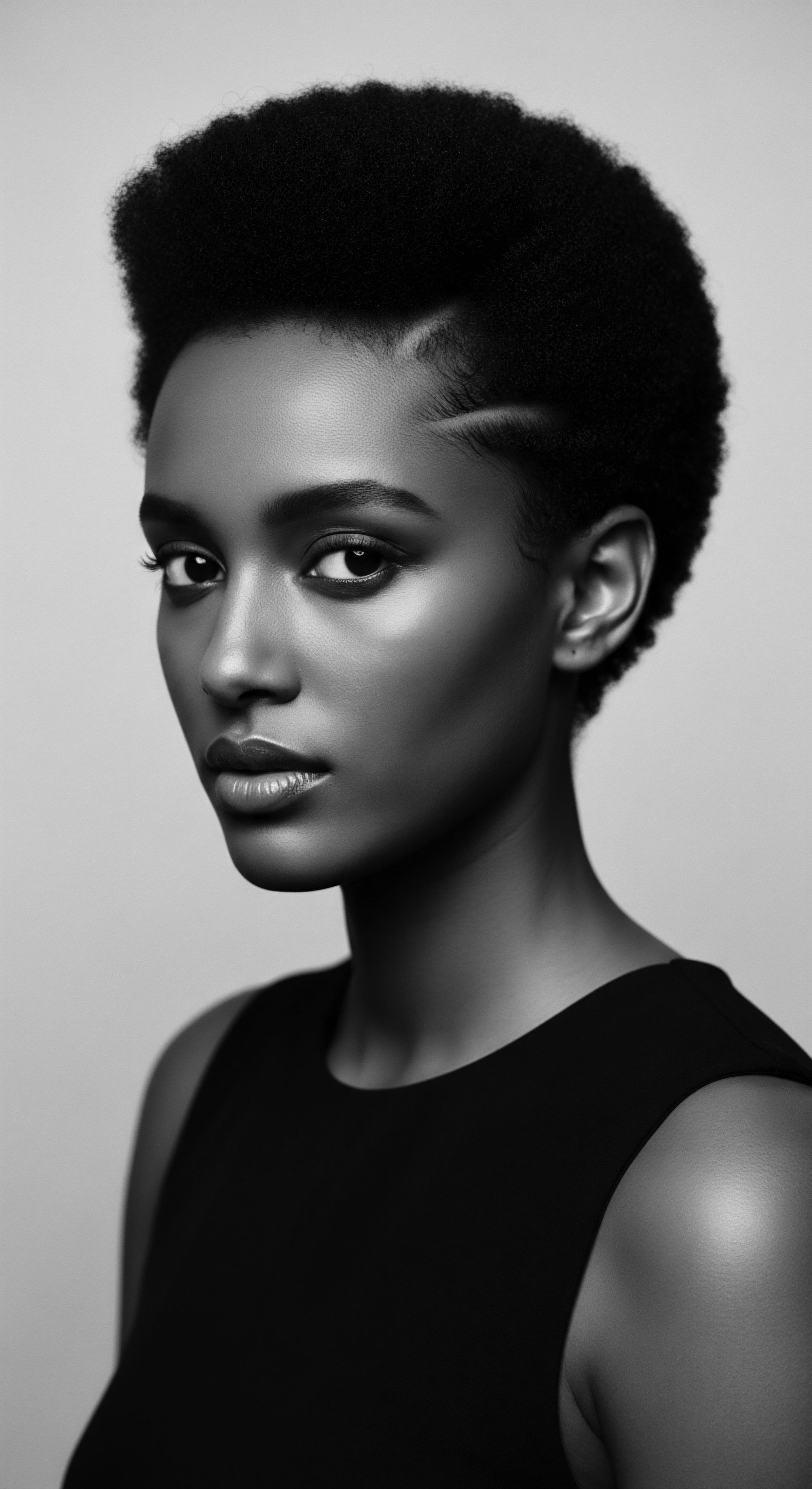
Relay
The journey of plant butters in textured hair heritage extends far beyond their initial utility, transcending simple cosmetic application to become powerful symbols of resilience, cultural pride, and scientific validation. The wisdom held in these ancient practices, once dismissed by colonial narratives, is now experiencing a profound resurgence, a conscious relay of knowledge that honors the past while building for the future. We see this not only in the sustained use of traditional butters but also in the increasing scientific inquiry that seeks to understand their efficacy, often affirming what ancestors knew instinctively.
This reawakening is particularly meaningful for Black and mixed-race individuals, for whom hair has historically been a contested site, a barometer of social acceptance and personal defiance. Reconnecting with ancestral hair care practices, particularly those involving plant butters, is an act of reclamation, a deliberate choice to honor lineage and assert identity.
The enduring knowledge of plant butters represents a vital relay, connecting ancestral wisdom with modern understanding.

Beyond Beauty Products
For many communities, plant butters were not solely for hair and skin. Their uses often blurred the lines between cosmetic, medicinal, and spiritual. In various African traditions, for instance, shea butter was used for its healing properties on wounds and burns, and even in ceremonial contexts.
This holistic view, where a substance could tend to the body, mind, and spirit, meant that the act of applying butter to hair was imbued with a deeper sense of well-being. It was an application of something sacred, something known to bring comfort, protection, and restoration in various forms.
The Ebers Papyrus, an ancient Egyptian medical text dating back to 1550 B.C. includes remedies for hair loss that incorporated fats from both plants and animals. While some early historical practices may appear unconventional by modern standards, such as certain animal fat concoctions, the consistent inclusion of plant-derived lipids speaks to a long-standing recognition of their value.
The research on mummies, for example, has revealed that ancient Egyptians used fat-based products, from both plant and animal origins, to style and preserve hair. This historical evidence confirms a sophisticated understanding of material properties long before chemical analysis.

Validating Ancestral Wisdom
Contemporary science is increasingly turning its gaze toward these traditional ingredients, often validating the wisdom of ancient practices. Research now explores the precise biochemical mechanisms through which compounds in plant butters benefit hair. For example, the high concentration of fatty acids in butters like shea and cocoa, particularly oleic, stearic, and palmitic acids, provides excellent emollience and occlusion, helping to reduce transepidermal water loss from hair strands. This scientific explanation complements the ancestral observation that these butters kept hair soft, pliable, and less prone to breakage in dry climates.
Moreover, certain plant butters contain specific phytochemicals with known biological activities. Ucuuba Butter, derived from the Amazonian Virola surinamensis tree, is noted for its antiseptic and anti-inflammatory properties, making it beneficial for scalp health. This aligns with traditional uses of such ingredients for soothing irritated skin or addressing scalp concerns. The connection is clear ❉ ancestral intuition, refined through generations of practical application, often aligns with modern scientific understanding, revealing a profound and practical ethnobotanical knowledge.
- Lipid Content ❉ Plant butters offer a dense concentration of fatty acids, which provides superior moisture sealing for porous, textured strands.
- Vitamins and Antioxidants ❉ Many butters contain vitamins A, E, and C, alongside other antioxidants, aiding in scalp health and protection from environmental damage.
- Anti-Inflammatory Compounds ❉ Certain butters possess properties that soothe scalp irritation, a common concern for textured hair.
The use of plant butters, therefore, represents a tangible connection to a continuous lineage of knowledge. It is a dialogue between the earth’s bounty and human ingenuity, a conversation that has echoed through generations and continues to shape the understanding and care of textured hair today.

Reflection
The journey into the ancient practices that informed the use of plant butters in textured hair care has been a profound exploration, revealing layers of human ingenuity, cultural perseverance, and deep connection to the natural world. From the simple act of pressing a nut to extract its vital lipids, our ancestors crafted regimens that nurtured both hair and spirit. These practices were not fleeting trends but enduring traditions, shaped by the needs of textured strands and the cultural values of communities that understood hair as a powerful symbol of identity, status, and heritage.
The echoes of these ancient ways resound in our contemporary understanding of hair care. When we reach for a jar of shea, cocoa, or mango butter today, we are not simply choosing a product; we are participating in a living legacy. We are honoring the hands that first discovered these plant gifts, the communities that sustained their wisdom, and the countless individuals who, through generations, passed down the gentle art of textured hair care.
Our hair, indeed, is a living archive, each strand a testament to a continuous story of resilience, beauty, and ancestral care. This deep lineage reminds us that the quest for hair wellness is fundamentally a journey of self-discovery, connecting us inextricably to the ‘Soul of a Strand’—a soul rich with history, radiant with wisdom, and boundlessly free.
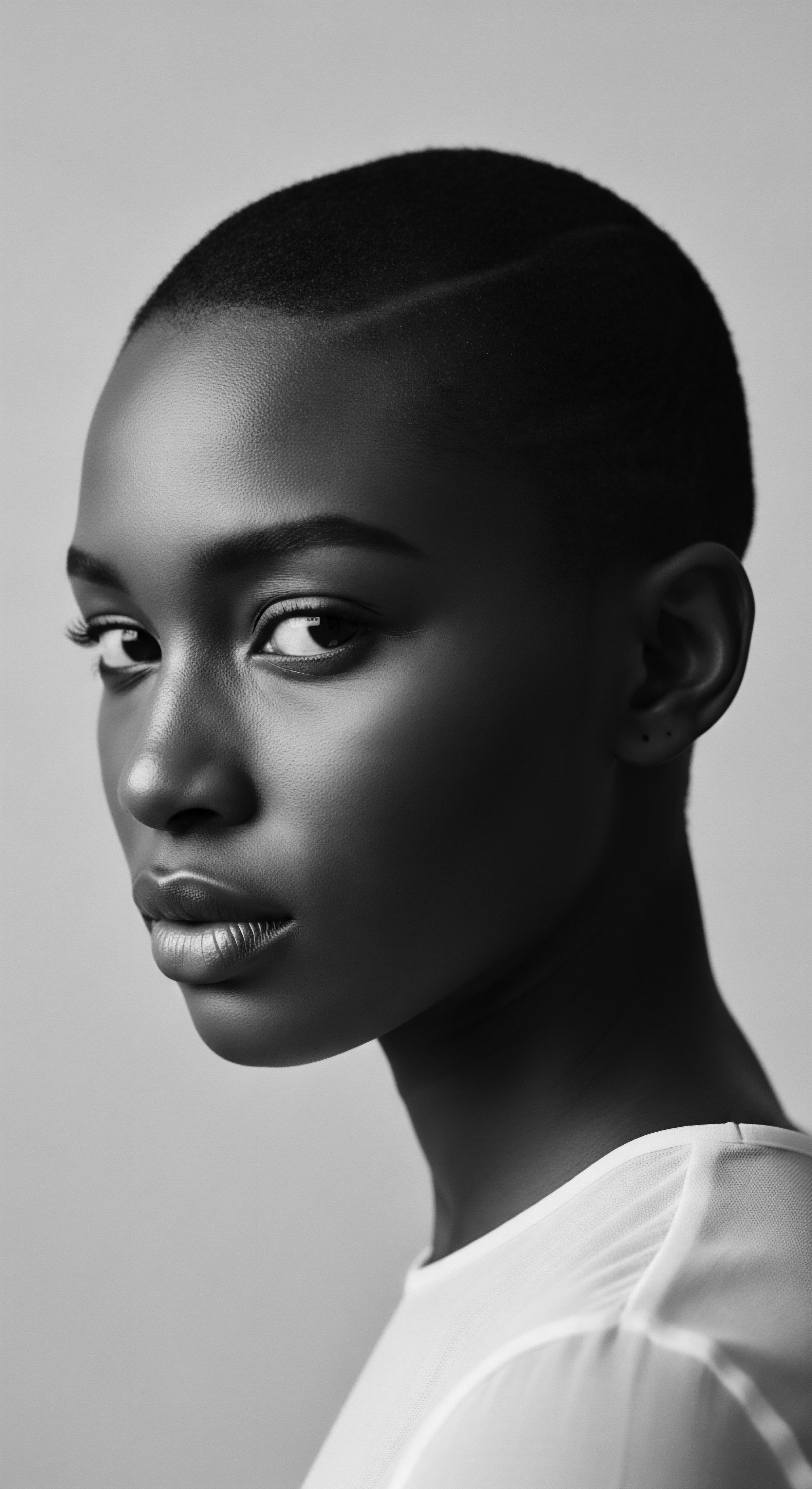
References
- Byrd, Ayana, and Lori L. Tharps. Hair Story ❉ Untangling the Roots of Black Hair in America. St. Martin’s Press, 2001.
- Dube, M. et al. “Cosmetopoeia of African Plants in Hair Treatment and Care ❉ Topical Nutrition and the Antidiabetic Connection?” MDPI, 2023.
- Ismail, M. “The Rich History of Shea Butter and Its Origins.” Paulski Art, 14 Feb. 2024.
- Joshi, P. S. et al. “In vivo phytotherapy in BALB/c athymic nude mice ❉ Hair growth promotion using Ficus religiosa L. and Morus alba L.” J. Nat. Remedies, vol. 21, 2021.
- Kporou, E. et al. “Quality, safety and activity of an ointment formulated from Butyrospermum parkii and Ricinus communis oils on rabbits hair growth.” Rev. RAMReS-Ser. Pharm. Med. Trad. Afr., vol. 20, 2021.
- Mohamed, R. “Shea Butter – Explainer.” Ciafe, 31 Jan. 2023.
- Moises, A. “The History Of Shea Butter.” SEAMS Beauty, 8 Jan. 2018.
- Parra, E. S. and R. D. Rodriguez. “Plant lipid composition for promoting hair growth, method for promoting hair growth and use of said plant lipids.” WO2017112990A1, 29 June 2017.
- Pavan, M. “Nativilis Amazonian Raw Ucuuba Butter (Virola surinamensis) – Nourishes Moisturizes Hair Restores Elasticity.” Nativilis Amazonian Raw Ucuuba Butter (Virola Surinamensis) – Nourishes Moisturizes Hair Restores Elasticity – Repairs Damaged Scalp Keeping Healthy – Amazon UK, Amazon, 18 Oct. 2023.
- Perez, J. “Cocoa and Shea Butters ❉ African Beauty Secret for Hair Care and Glowing Skin.” AfroGlow, 25 June 2024.
- Plaza, M. “Shea Butter Origins and Uses.” Mytropicalresidence.Com, 6 Feb. 2025.
- Tiwari, R. et al. “Development and evaluation of herbal hair serum ❉ A traditional way to improve hair quality.” Open Dermatol. J., vol. 15, 2021.
- Unattributed. “A Hairy Tale of the Past ❉ Unveiling Ancient Hair Treatment Methods You.” Shunji Matsuo Singapore Premier Japanese Hair Salon & Expert Haircuts, 11 Mar. 2024.
- Unattributed. “The Unusual History of Hair Loss Treatments.” Numan, Numan, 30 Apr. 2024.
- Unattributed. “Mummies’ newest secret ❉ Gelled hair.” CBS News, CBS Interactive Inc. 29 Aug. 2011.
- Walker, Susannah. Style and Status ❉ Selling Beauty to African American Women, 1920-1975. University of North Carolina Press, 2007.
- Yussif, M. “Cocoa Butter ❉ An Ingredient Found in Brasil Caca.” Cadiveu Professional, 24 Apr. 2024.
